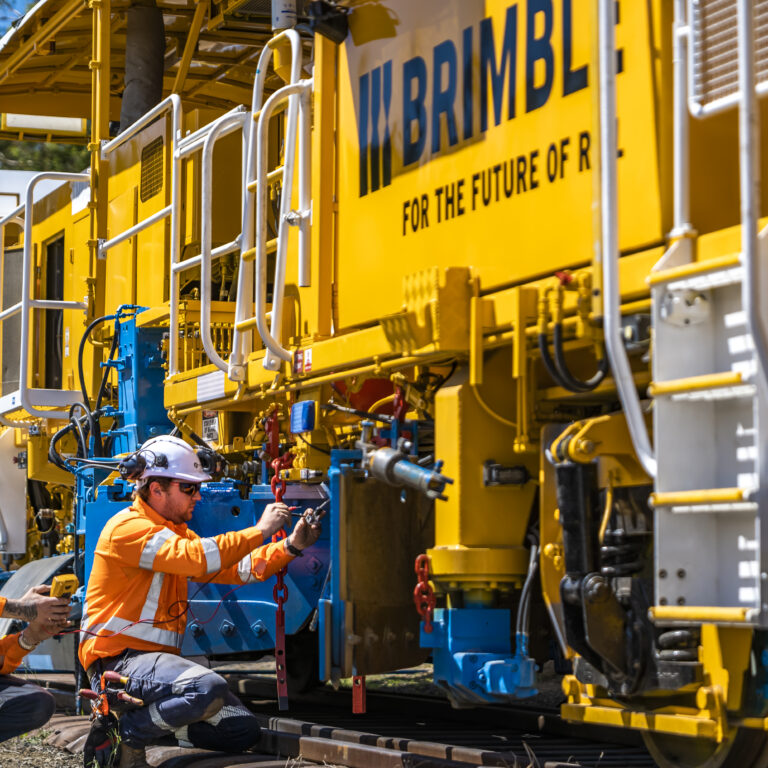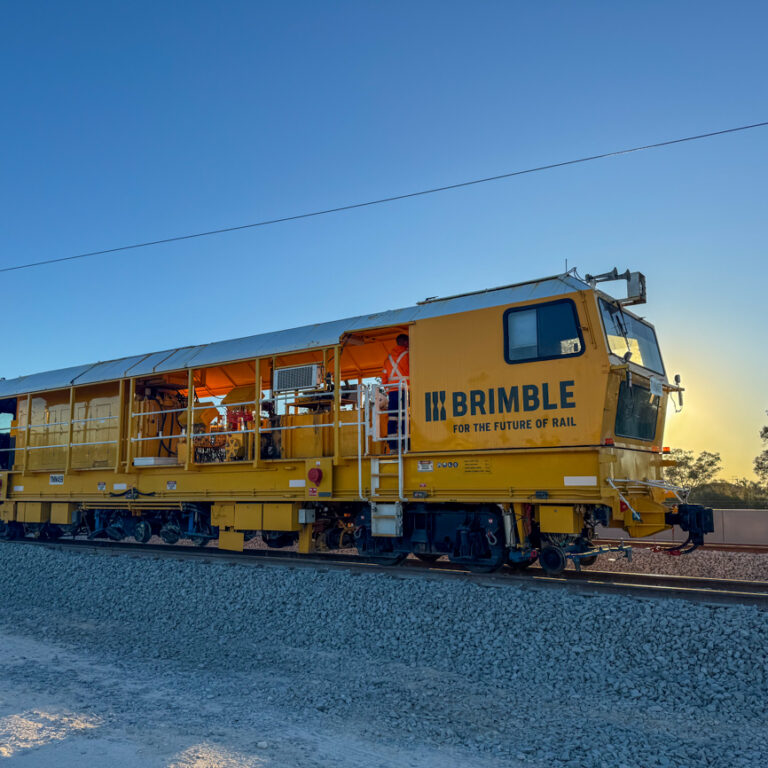
Brimble’s method for success.
After nearly a decade in business, Brimble is looking to share its methodology for mutual success.

After nearly a decade in business, Brimble is looking to share its methodology for mutual success.
Brimble has expanded rapidly from its humble beginnings in 2017. Now in its eighth year, the business wants to share more of its methodology with the industry, encouraging clients to include the organisation early in the process when it comes to rail maintenance and construction planning.
Rail Express spoke with Steven Johnson, general manager of operations East, at Brimble to understand the company’s overall goal of supporting the rail industry.
“The general background is that construction organisations come at these challenges from their own perspective,” he said.
“They are working out how they want to develop a delivery methodology, and they may be looking through a narrow lens.
“We can be incorporated quite late in a project, which has some challenges. We don’t want to just be there when something has gone wrong. We can be of greater benefit when we are engaged early.”
Johnson explained that with Brimble’s range of machines, there is a possibility to improve the methodology and make users aware of different equipment solutions available and even sometimes better equipment than what has been used in the past.
“Rather than just being engaged to give them a machine, we want to be engaged to actually provide a solution,” he said.
“We are not competing with these organisations tendering for major projects, we are machine-focussed and want people to utilise that skillset.”
Building a purpose-built fleet
Brimble organises its fleet into three core offerings for the rail sector: the Ultimate Series, the Pro Series, and the Utility Series.
Johnson explained that Brimble takes on the pressure of upgrading and modifying its fleet to meet the needs of the ever-growing rail industry.
“The risk appetite is just not there for these organisations,” he said.
“A lot of companies are intimidated by the idea of upgrading and modifying equipment to suit a project, but this is our core business.”
Johnson went on to explain that what separates Brimble is its willingness to take a machine, or a machine with a slightly different functionality, and modify it to suit the needs of the project.
“It is quite a different way of approaching things,” he said.
“Other maintenance companies are more focussed on their own programs of work whereas we are more focussed on our machines.
“We aren’t in the manufacturing game, but we do focus on updating our assets to suit the needs of projects and the ever-changing needs of the industry.
“Modification of a machine is not a concern to us. When somebody has a piece of equipment or an asset, that’s ageing, or it’s got a slightly different functionality, we’re quite happy to assist them with a new methodology for their piece of equipment and/or their approach for net-zero.”
Brimble is taking the time to invest in machinery and tweaking it to ideally suit the Australian market instead of bringing in new machinery that may not be purpose-built for Australia’s railways.
The right machine at the right time
Johnson went on to detail how long lead times on machines when purchasing them brand new, can restrict the success of a tender.
“A lot of these companies cannot compete on these mega projects as they simply don’t have the equipment in their stables,” he said.
“Whereas if we are brought in during the early stages of a tender writing process, we can provide a unique perspective and offer up machinery they have not thought of.”
Brimble is positioning itself to package up solutions for its partners.
The companies that can take on projects like Inland Rail have the funds to take on
new machines for these projects, but it is not that simple.
“The cycle of winning a project and getting the work underway is about 12 months, but the lead time for a new machine can be anywhere from 24 to 36 months,” Johnson said.
“We take that risk on owning that asset, so these construction companies don’t have to.”
Johnson has spent time on the other side of the fence, selling many of the machines Brimble has to contractors. This has given a unique understanding of the barriers many see, and he has helped to position Brimble to meet this gap.
“It is not surprising that many companies do not want to make that massive investment in new machines. What we can offer is an ability to harness what we have to ensure the success of the project,” he said.
Thinking outside the square
Johnson provided an example of why bringing in Brimble to the fray early can make them an asset to the success of a tendering process.
“We have brought machinery on board that will allow organisations to move materials in and out by rail as opposed to doing it through trucks and similar machines,” he said.
“For one example, we can employ our extensive fleet of MFS wagons to deliver materials directly to on-site locations where they are required. Additionally, we can extract a substantial amount of material from sites, particularly during upgrades of a brownfield project.”
By doing this Johnson said it reduced the instances of having to heavily adjust rail corridors to allow access for trucks and other ancillary machinery.
“A tender can be so much more successful if you can guarantee you will take vehicles off the road,” he said.
Instead of taking weeks to stockpile materials brought in by trucks, by bringing it all in utilising the rail network, companies can reduce the time needed.
“It makes sense to use the rail corridor for what it is designed to do,” Johnson said.
“There are significant potential benefits to this, but it requires a totally different way of thinking and the willingness to go on the journey with us.
“You might not be able to eliminate all the trucks from the road, but if you can reduce it significantly, that’s a win for everyone involved.”
Johnson explained that 50 or 60 years ago as trucks and machinery were less advanced, the use of the rail corridor for the movement of materials was commonplace.
“Over time the cheapness and availability of transport and excavators has seen the move to utilising them as opposed to rail corridors,” he said.
“We now have different constraints like access to sites at specific times of day and environmental concerns.
“This is why bringing Brimble into the conversations early can revolutionise a construction company’s offering in a tender and give them the edge to win over competitors.”



